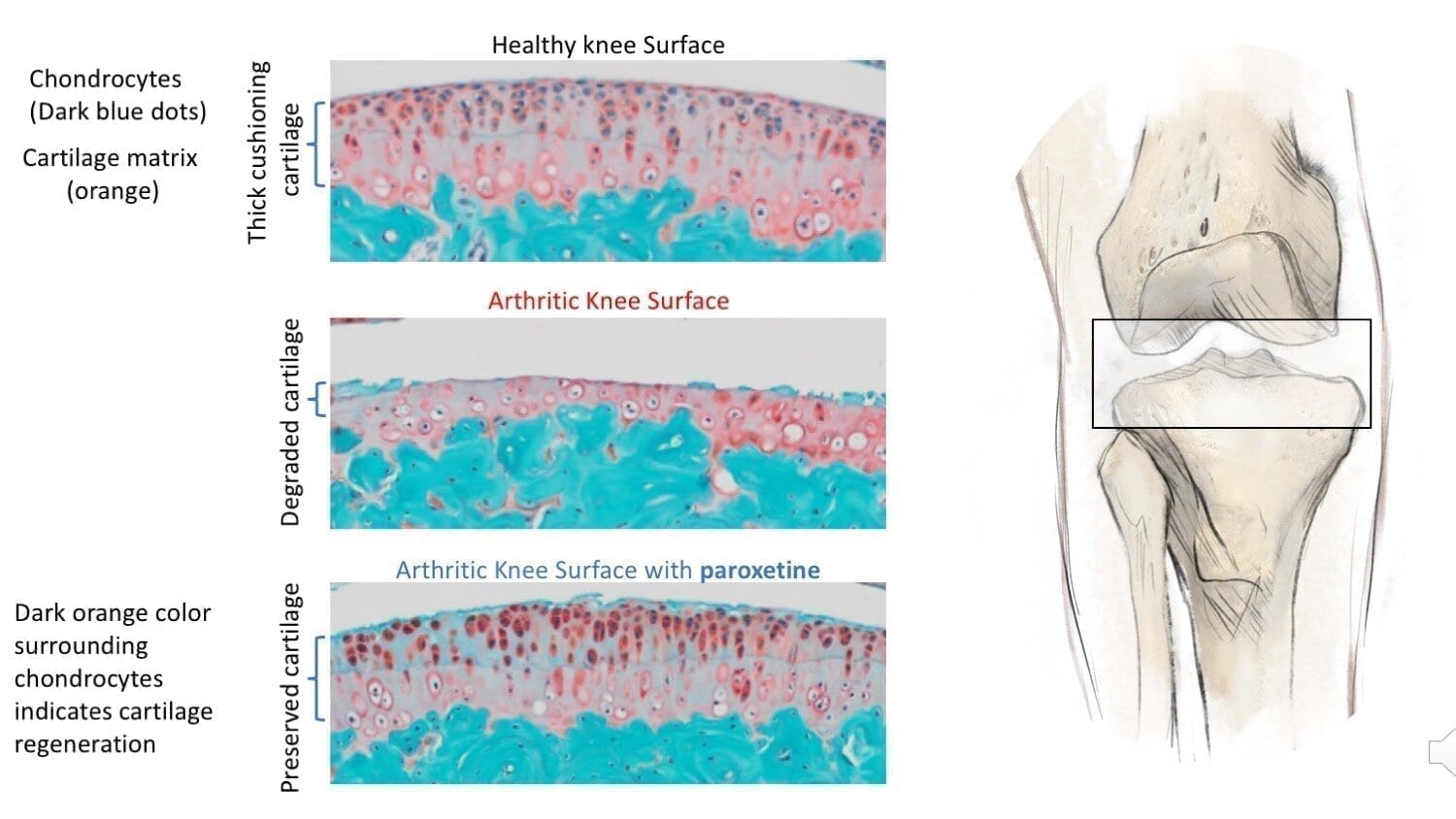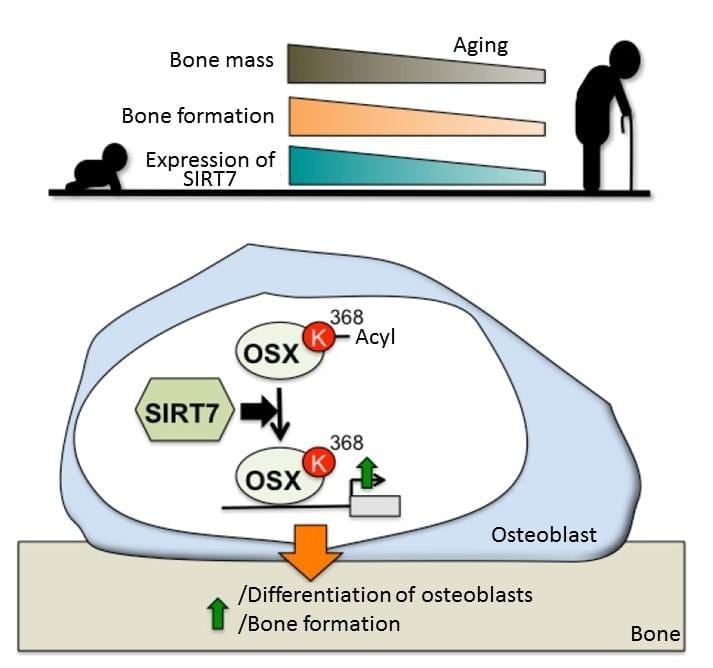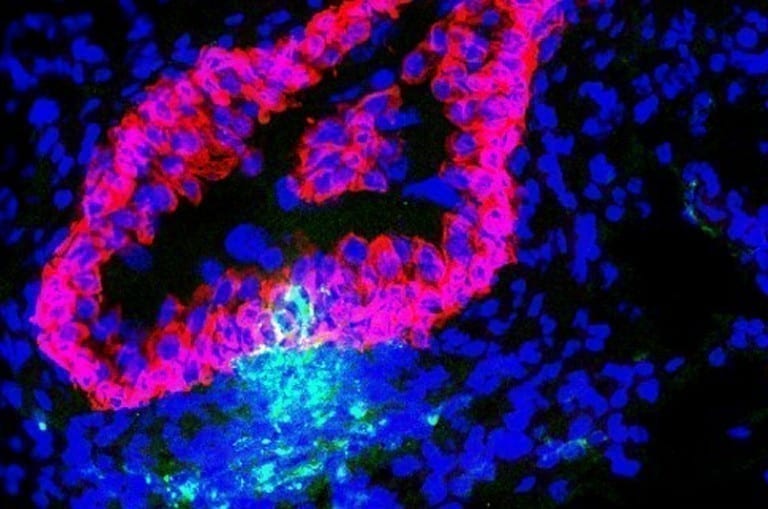
Researchers found that Paroxetine not only slows down cartilage degeneration, but also promotes cartilage health in both mice and human cartilage in vitro. Credit: Fadia Kamal, Penn State
A disease of the joints, osteoarthritis affects more than 30 million adults and is the fifth-leading cause of disability in the United States. In a new study, scientists have discovered the cellular pathway that leads to osteoarthritis and have identified a commonly used anti-depressant—paroxetine—that inhibits this pathway. The team found that Paroxetine not only slows down cartilage degeneration, but also promotes cartilage health in both mice and human cartilage in vitro. The drug may be the first-ever treatment for this debilitating, degenerative disease.
“Osteoarthritis destroys joint cartilage and results in pain and disability,” said Fadia Kamal, assistant professor of orthopedics and rehabilitation at Penn State College of Medicine. “Patients live with this pain until their cartilage is extremely degenerated. Unfortunately, an invasive artificial joint replacement surgery is the only treatment orthopedists are currently able to offer. There has been a dire need to identify novel therapeutic targets, approaches or agents that can actively halt or reverse the osteoarthritis disease process.”
In previous research, Kamal and her colleagues found that elevated expression and activity of the enzyme G protein-coupled receptor kinase 2 (GRK2) leads to pathologic cell growth in heart and kidney disease.
Kamal explained that osteoarthritis is similarly driven by pathological growth of cartilage cells, a process called chondrocyte hypertrophy, but how this proliferation occurs had been a mystery. Given their knowledge of the role of GRK2 in heart and kidney disease, Kamal and her team decided to investigate the enzyme in osteoarthritis patients. They found that patients with osteoarthritis or acute injury to the joint had high levels of GRK2 in their cartilage cells, or chondrocytes.
“We discovered a central role for GRK2 in cartilage degeneration, where GRK2 pushes chondrocytes to destroy the cartilage matrix surrounding them instead of replenishing and maintaining it.” said Kamal. “In other words, the cells receive a bad signal to destroy cartilage.”
The researchers confirmed the role of GRK2 in cartilage degeneration in two experiments: in one, they performed a genetic deletion of GRK2 from cartilage cells in mice, and in the other, they administered paroxetine—an FDA-approved selective serotonin reuptake inhibitor (SSRI) that is a potent GRK2 inhibitor—to the mice. In both cases, they found that not only did GRK2 deletion prevent chondrocyte hypertrophy and halt osteoarthritis progression, but it also promoted cartilage regeneration.
“We found that paroxetine could return cartilage cells back to a normal state and preserve the cartilage surface,” said Kamal.
In other experiments with cultured human osteoarthritic cartilage, obtained from patients undergoing knee replacement surgery, the team also confirmed the ability of paroxetine to mitigate chondrocyte hypertrophy and cartilage degradation.
The results appear on Feb. 10 in the journal Science Translational Medicine.
“Our findings present elevated GRK2 signaling in chondrocytes as a driver of chondrocyte hypertrophy and cartilage degradation and identify paroxetine as a disease-modifying drug for OA treatment,” said Kamal. “This is important given that around 80% of the U.S. population will develop radiographic evidence of osteoarthritis by age 65 and with the growing prevalence of osteoarthritis risk factors, such as obesity and diabetes, osteoarthritis will likely carry an even greater burden in the future.”
The team is currently seeking approval from the FDA for a new trial of this drug to treat osteoarthritis.
“If this trial works, we will have found a new solution to an age-old problem of joints in the body wearing out because of cartilage destruction and loss,” said Kamal. “We hope to intervene with this disease-modifying treatment for the benefit of our patients.”
Original Article: Common anti-depressant may be first-ever treatment for osteoarthritis
More from: Penn State University College of Medicine
The Latest Updates from Bing News & Google News
Go deeper with Bing News on:
Paroxetine
- Acute angle closure glaucoma presenting in a young patient after administration of paroxetine
Lewis FL, DeQuardo, DuBose C, Tandon R . Acute angle closure glaucoma and paroxetine. J Clin Psychiatry 1997;58:123–4.
- Fluoxetine - Uses, Side Effects, and More
What is fluoxetine used for? Fluoxetine is commonly used for the following conditions. Fluoxetine may also be used for other conditions as determined by your healthcare provider. How does ...
- Tramadol for Premature Ejaculation
The forest plot for this analysis is presented in Figure 4. Tramadol vs. Paroxetine (SSRI). The between-group difference in geometric mean IELT (minutes) at 6 weeks, based on one RCT (n = 70 ...
- Capturing Truth Amidst Chaos: A Review Of A24's ‘Civil War'
Check out our spoiler-free review of A24's 'Civil War,' the action-epic directed by Alex Garland, now playing in theaters nationwide. The post Capturing Truth Amidst Chaos: A Review Of A24’s ‘Civil ...
- Adjustment Disorder : What Is It & Treatments
Can also help with sleep and appetite disturbances. Escitalopram. Fluvoxamine. Paroxetine Anti anxiety drugs: Used to treat clinical anxiety or prevent it from recurring. Can also help with sleep.
Go deeper with Google Headlines on:
Paroxetine
[google_news title=”” keyword=”paroxetine” num_posts=”5″ blurb_length=”0″ show_thumb=”left”]
Go deeper with Bing News on:
Osteoarthritis treatment
- Observational study to help slow the progression of rheumatoid arthritis
Columbus-based healthcare company AndHealth launched an observational study designed to help participants slow the progression of rheumatoid arthritis (RA). Titled Project IMPACT, this initiative is ...
- Organogenesis Achieves Primary Endpoint in Phase 3 Clinical Trial of ReNu® for Knee Osteoarthritis
Statistically significant (p=0.0177) reduction in knee pain at six monthsStatistically significant (p
- Deceptive insurance practices that block medical treatment access need reform
Over 2 million Louisianians are living with a chronic illness, such as hypertension, diabetes, and arthritis. For these patients, uninterrupted access to provider-recommended treatments is essential ...
- What Is Psoriatic Arthritis? 3 MDs Weigh In
About 30 percent of people with psoriasis will develop psoriatic arthritis. Here's what to know about symptoms and treatment.
- Study sheds light on the debate around two types of shoulder replacement surgery for osteoarthritis
A new study has provided valuable insights into the ongoing debate surrounding two types of shoulder replacement surgery: reverse total shoulder replacement and anatomical total shoulder replacement ...
Go deeper with Google Headlines on:
Osteoarthritis treatment
[google_news title=”” keyword=”osteoarthritis treatment” num_posts=”5″ blurb_length=”0″ show_thumb=”left”]
[embedyt] https://www.youtube.com/embed?listType=playlist&list=PL0UjJ07OSXC83oV409r1yRju8-ihA1InJ&layout=gallery[/embedyt]










